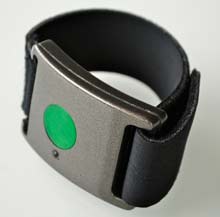*For this post, you will need to read the "Spukhafte Fernwirkung" posted on July 10th, 2009 in order to understand this post more. I have read about the topic and find it somewhat complex. I will do my best to explain it.*
Before we get started, lets look at the EPR paradox or the
Einstein-Podolsky-Rosen Paradox. In simple terms, there are 3 parts to the paradox. In terms of a system:
- Without disturbing it, if we can predict a physical value with certainty, then there exists a physical reality that goes with the quantity.
- Measurements of particle at place A cannot instantaneously disturb another particle at place B because nothing goes faster than the speed of light.
- Any complete theory in physics must be able to predict all elements of reality.
As shown in the previous posts, Entanglement has the ability of instantaneously transmitting information from one particle to another (for example electrons, whether one is spin up or spin down). Using the logic in the paradox, Einstein insisted that Quantum Theory (More specific, Entanglement) was an incomplete theory.
John S. Bell, a theoretical physicist came up with a theorem that coincides with the EPR Paradox. It states that "No physical theory can produce the all same predictions of quantum mechanics."
This is easier to understand if I set up a scenario. A pion is a subatomic particle which, when it decays, produces 2 photons that move in exactly opposite directions. They are entangled, since they were produced by the samepion. Now we want to measure
multiple properties of the photons. Due to Heisenberg's Uncertainty Principle, we can only take one measurement of the photon accurately. So here is the conundrum, if we measure one propertie of photon 1, we automatically know with accuracy the same property about photon 2. Are we able to measure a property of photon 2 with great accuracy then? If photon 1 has a measured spin in the x-direction, we know the spin for photon 2 to be the opposite, in the same direction. But can we measure the y or z direction of the spin?
According to Heisenberg, we can only know one thing really, really well. So this would break down the Uncertainty Principle. Bell setup a assumptions for his inequality to work:
- Logic is valid
- There is a reality separate from its observations.
- Information cannot travel faster than light
There is an invalid argument because the we do know that information can travel faster than light (contrary to Einstein's belief). Scientists believe that the statement of "Logic is valid" could be wrong. We do not have the right mathematics to see if our statements are true.


